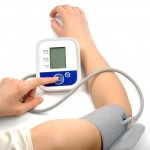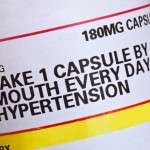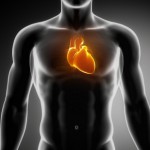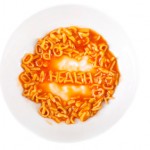I was reading the New York Times online today and noticed an important article in the Health section. A working group from the National Cancer Institute (NCI) had just published an article in the pre-print edition of JAMA that will likely change a highly significant face of medicine for many of us.
The issue is cancer diagnosis and, in many cases, over-diagnosis. Some pre-malignant conditions, in the viewpoint of this distinguished group, now come with the word cancer attached. That may lead to extensive testing, surgery or chemotherapy (or radiation therapy) and much mental anguish (and potential physical harm) for the patient involved.
Abnormalities, potentially malignant, can be discovered while scanning or even examining for something else. Dr. Peter Libby, chief of cardiovascular medicine at Brigham and Woman's Hospital in Boston, a Harvard medical school teaching facility, wrote a June 8, 2010 piece in The New York Times titled "The 'Incidentaloma' Problem with Medical Scans." A columnist for that paper had a CT scan for other reasons; a kidney mass was detected and a three-hour operation and eventually a six-inch scar ensued, yet the mass was benign. Dr. Libby's review of the medical literature with his area of expertise in mind showed that greater than eight percent of cardiovascular imaging studies revealed incidental findings that led to further medical procedures.
His conclusion was we're doing far too many CT scans.
Another physician wrote an April, 2011 piece in US News and World Report about a woman referred to him as a followup of an ER visit for abdominal pain that turned out to be viral gastritis. She too had a CT scan which showed her liver and intestines were normal, but one of her kidneys had a tiny mass, almost certainly a benign cyst. But the radiologist, while noting this lesion had all the features of something non-cancerous, covered his or her behind by saying, "Cannot rule out malignancy. Clinical correlation required." Translation: it was almost certainly nothing serious, but there was a very small chance that it might be cancer, and now it was the surgeon's job to make sure it wasn't.
But it's not just those advanced radiologic procedures, or MRIs or other tests; It's the mentality involved and that includes physical exams.
Let me give you a personal vignette. In 1969, as a second year clinical fellow in Nephrology, I went to see the Chief of Urology because of an abnormal lab test that involved my kidney function. A few questions later, he determined it was due to a diet I was on for a research project.
"But as long as you're here, Peter," he said, "I'll check your prostate."
It wasn't quite normal, a tad bigger than it should have been. He said, "You'll have a TURP (transurtheral resection of the prostate) by the time you're sixty"
He recommended I monitor my symptoms (I had none at the time) and get repeat examinations at intervals.
Well, I'm seventy-two and haven't had that surgical procedure. But what I did have, for many years, was a yearly digital prostate exam and, after 1994, a PSA (prostate specific antigen) blood test done periodically. At some point not only was the gland enlarged, but it the urologist involved thought it was also slightly asymmetric, so I had multiple biopsies, even though my PSA had consistently been less than 1.0, e.g., way below the level of concern.
All those biopsies showed benign (non-cancerous) tissue.
Now that I'm over seventy I don't ask for a PSA test, wouldn't agree with one if it were suggested and had my last digital exam of the gland several years ago.
But if I had that cancer at age 28 or 40, I would have been in real trouble. I would have been concerned about a malignancy that would likely kill me and would have welcomed any logical treatment for the disease. The NCI webpage on prostate cancer estimates nearly 240,000 new cases will be diagnosed in the United States this year and almost 30,000 men will die from that disease.
But the natural history of the tumor in most older men (>70 years old) is such that they will most likely die from something else (e.g., heart disease).
The NCI's fact sheet on the PSA test is well worth reading. An initial statement is that the higher a man's PSA level is, the more likely he has cancer of the prostate. Then the caveats begin: there are other reasons for the PSA to be elevated (I now have one of those, BPH or benign prostatic hypertrophy, an enlarged prostate). Half of all men over the age of fifty have BPH that is symptomatic with some hesitancy in starting their urine stream and/or a smaller stream.
If I had actually had cancer of the prostate at age sixty, my PSA may have been elevated. Then I would likely have had surgery to remove the tumor if it was localized to the gland and my physicians would then have periodically repeated my PSA testing to monitor if I had a recurrence of the neoplasm (a new and abnormal growth of tissue in some part of the body, especially as a characteristic of cancer).
A PSA level under 4.0 (nanograms/mililiter) was considered to be normal (my last PSA, done three years ago, was 0.7 ng/mL). In the past, if a man had a PSA level above 4.0 his physician would have likely suggested biopsy to see if he had prostate cancer. But there are men who have that malignancy and yet have a PSA under 4.0 and, as I mentioned above, other, benign conditions can elevate the PSAwhile some medications used for BPH can lead to a lower PSA level. Only a quarter of those guys who have a prostate biopsy because of a PSA that's elevated actually have cancer of the gland.
But now there's considerable question whether PSA testing should be a routine, even though medicare and many private medical insurance plans cover a yearly screening using this test. The consensus seems to be that men should hear the pros and cons of the test before giving consent for it to be performed.
If 1,000 men in the 55 to 69 age range get screened with this test every one to four years, 100-200 will have false-positive results (no cancer, but an elevated PSA) and may have a biopsy recommended and, of course, worry about what's going on with their prostate.
One hundred ten, according to the cancer.gov website, will be diagnosed as having prostate cancer and nearly half of those will have treatment complications (The National Cancer Institute website mentions sexual dysfunction, bowel or bladder control issues and infections.)
Four to five will actually die from prostate cancer, but five of every 1,000 who don't have the screening will die from that cancer.
So the net is 1,000 have been screened to save 0-1 life.
And to further complicate things, the research done to determine what the normal upper limit of PSA is has largely been done in white men only.
So where do we go from here? There are studies being done to look at precursors of PSA, rate of change of PSA. free versus bound PSA etc.
We need a better method to tell us if a man has a cancer or a benign prostate condition and to determine which prostate cancers are highly malignant fromt hose that are slow growing.
And all that's just one cancer-screening tool.







